This is the second post in a series of tests of the Fujifilm GFX 100, Mark II, which was released this week. You can find all the posts in this series by going to the Categories pane in the right hand panel and clicking on “GFX 100 II”.
In the last post, we looked at the read noise performance of the GFX 100 II with 14-bit precision. In this one, we’ll look at 16-bit precision graphs.
First, with EFCS on:
You can see that the ISO 40 setting is bogus, providing no more dynamic range than ISO 80. It works the same way as setting the camera to ISO 80 and setting exposure compensation to +1 stop, with the disadvantage that the histogram is wrong, which wouldn’t be the case if you set the camera to ISO 80 and dialed in the exposure compensation. There appears to be no increase in engineering dynamic range (EDR) with 16-bit presision when compared to 14-bit precision
With electronic shutter (ES):
Again, this looks like the 14-bit graph.
Comparing the GFX 100 II to the GFX 100S and averaging the raw channels, this is what we see:
The earlier camera is somewhat better from ISO 100 to ISO 400, at which point the differences become academic. However, the GFX 100 II excels at ISO 80, with an increase over ISO 100 that I’m having a hard time understanding.
Throwing the Hasselblad X2D 100C into the mix:
The X2D switches to high conversion gain at a lower ISO setting than either of the two GFX cameras, trading off better performance from ISO 200 through ISO 400, with a relative EDR disadvantage above that.
Here are the 16-bit precision spectra with EFCS at ISO 80 and ISO 100 for each of the raw channels.
fs is the sampling frequency. Lowpass filtering in the vertical direction.
Less lowpass filtering.
No filtering, same with both ISO settings.
A little more filtering at ISO 80, and it looks like that’s enough to suppress the spike a one-third of the sampling frequency.
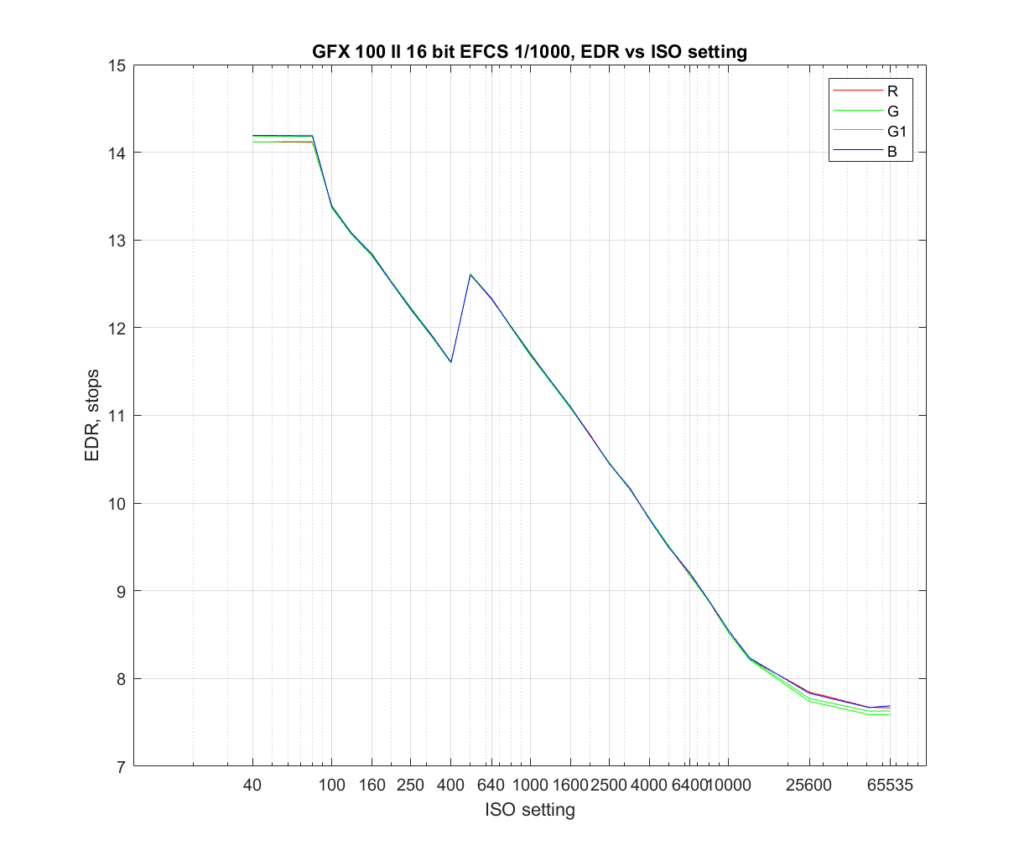
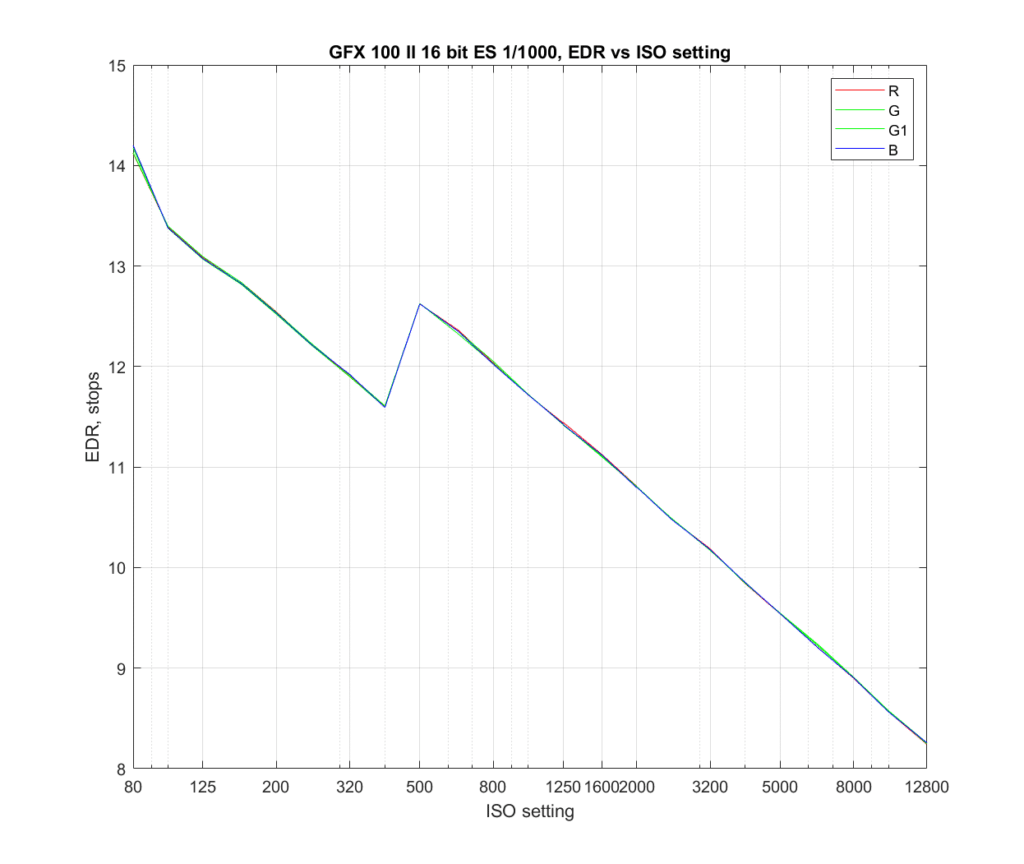
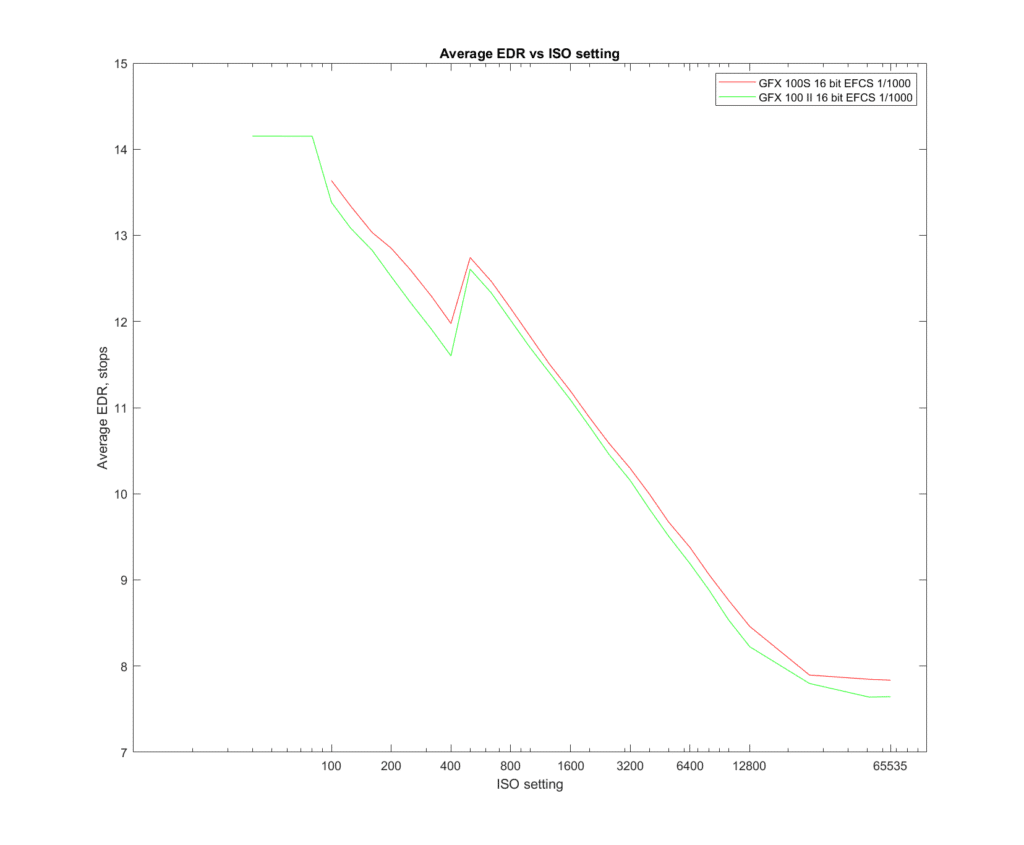
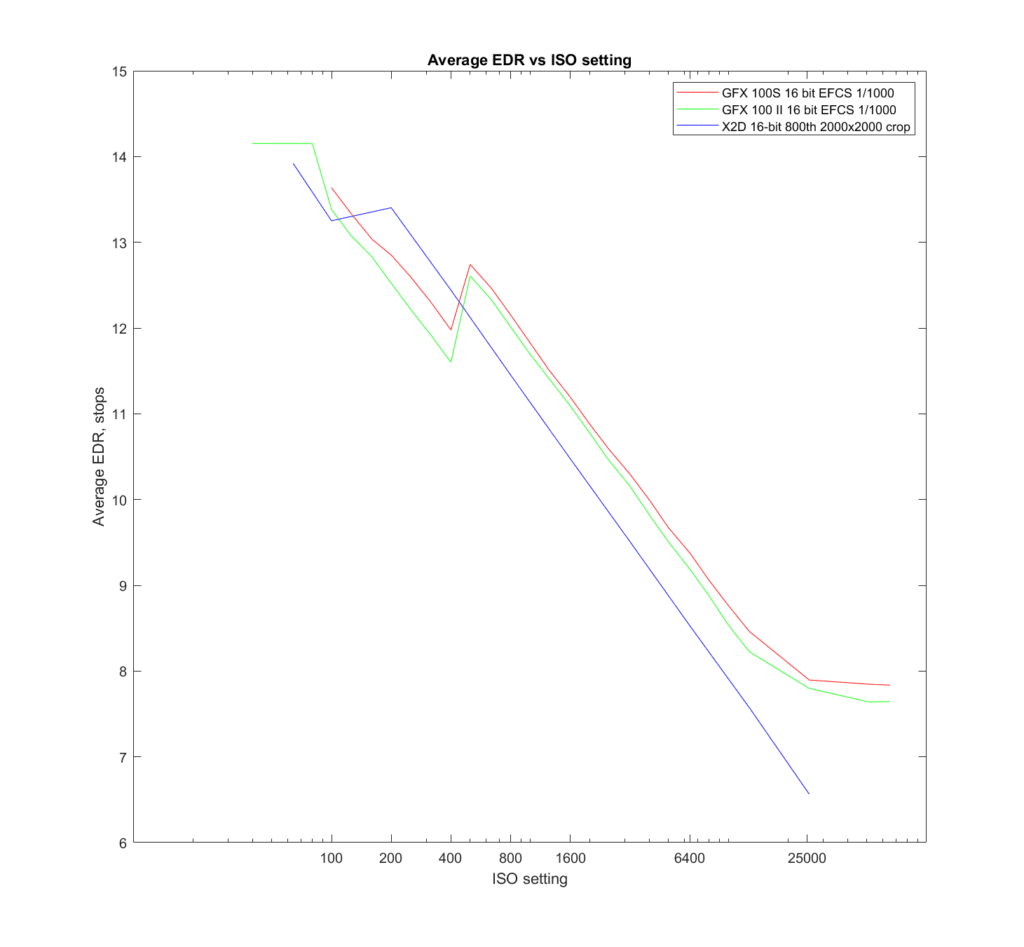
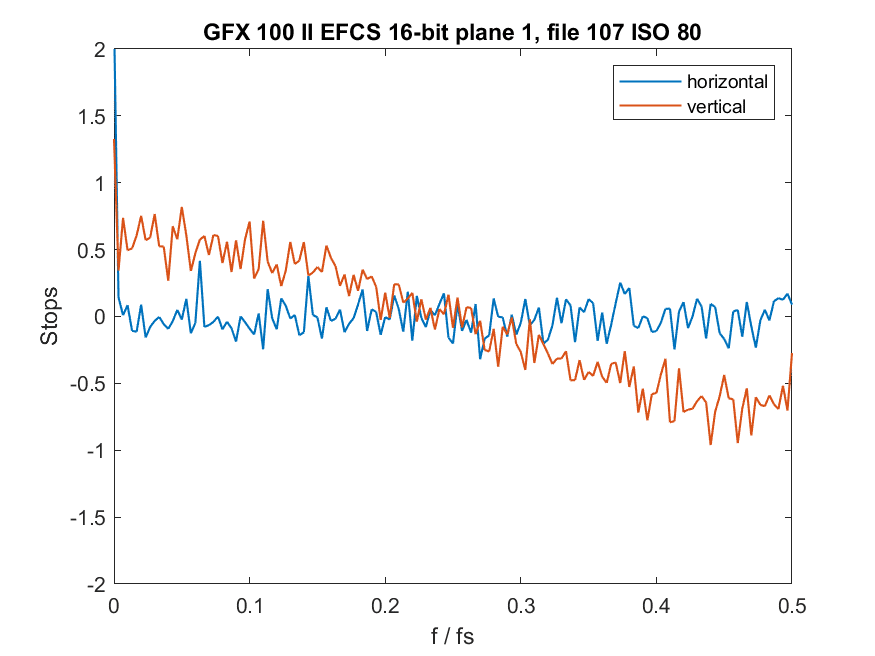
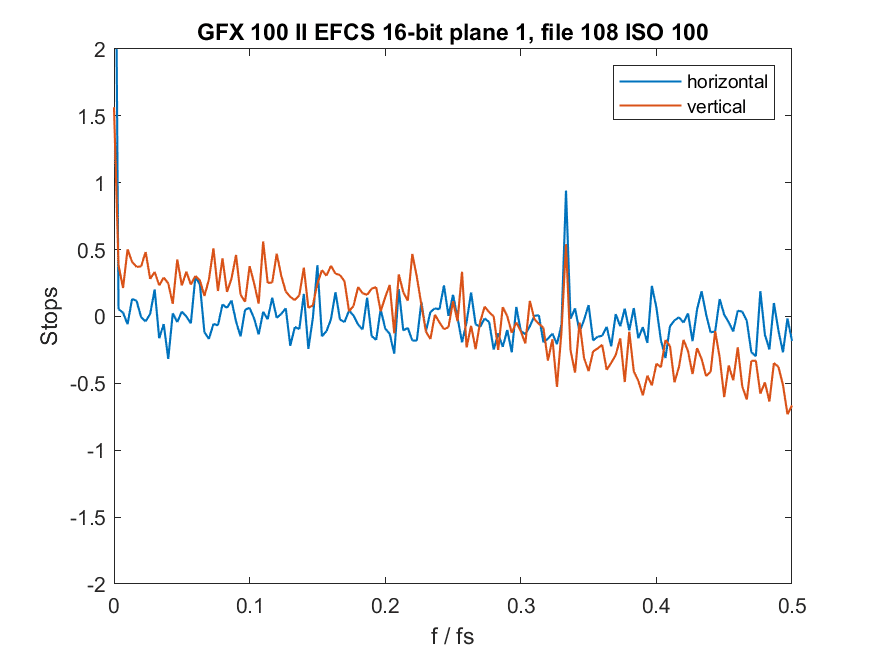
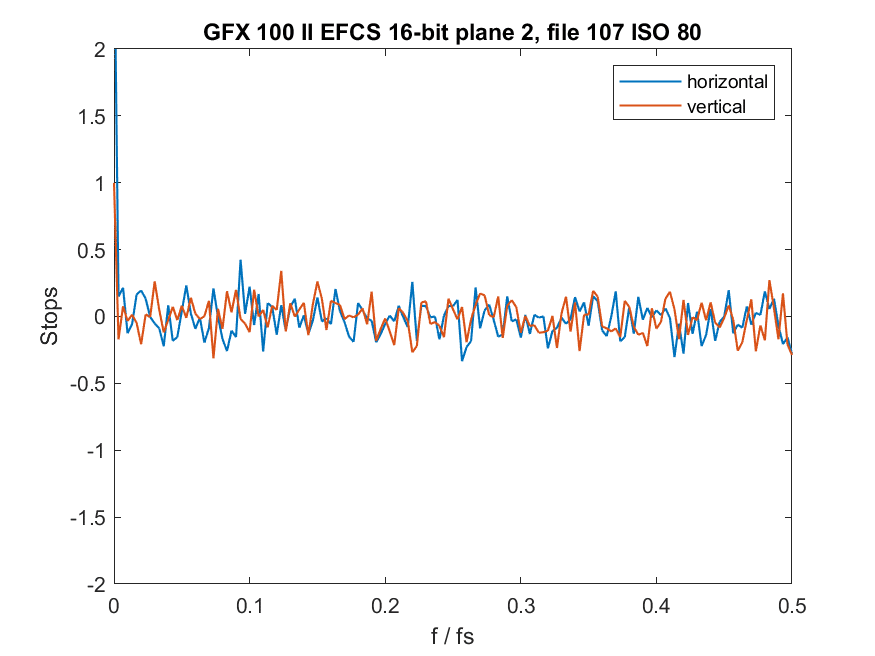
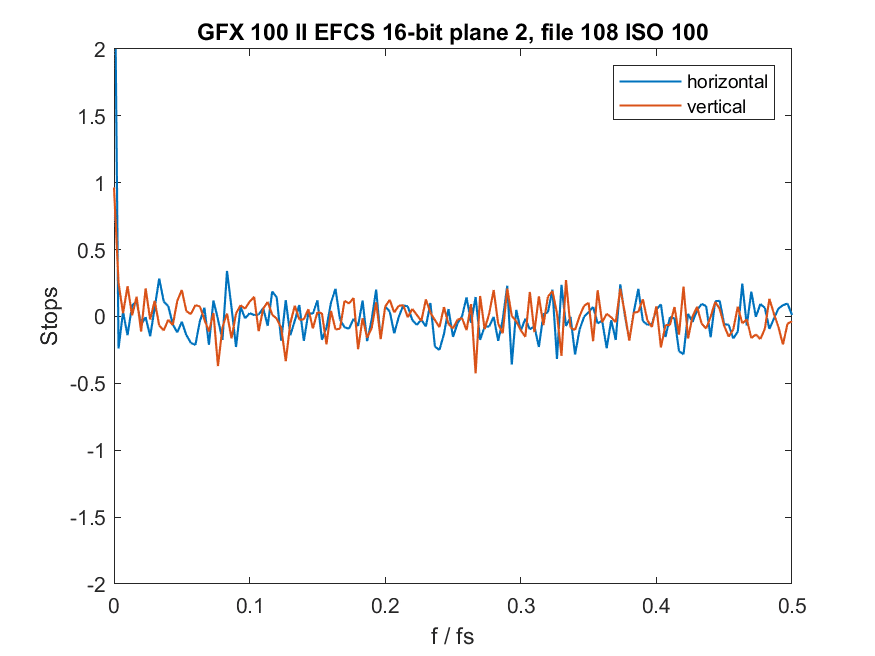
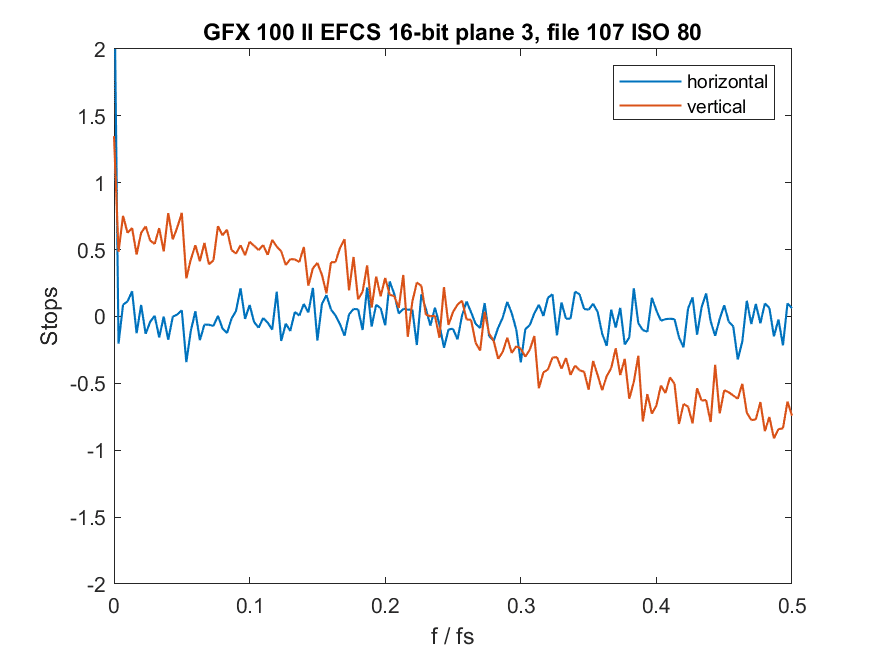
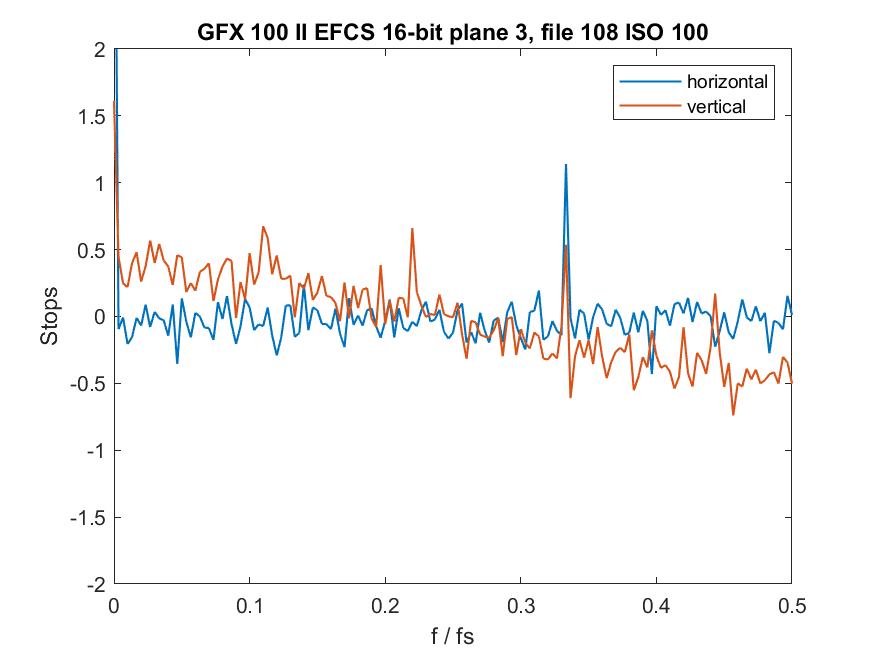
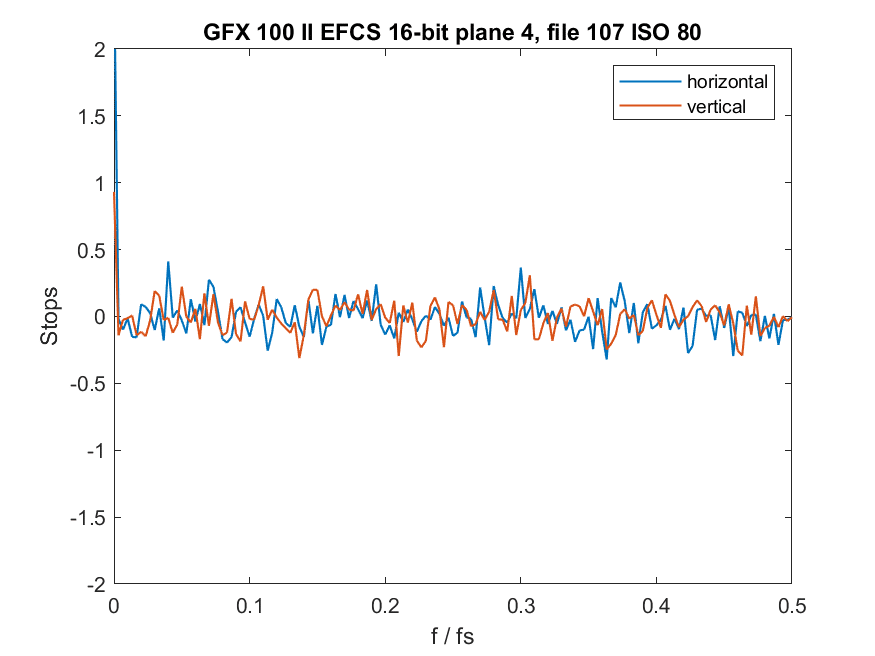
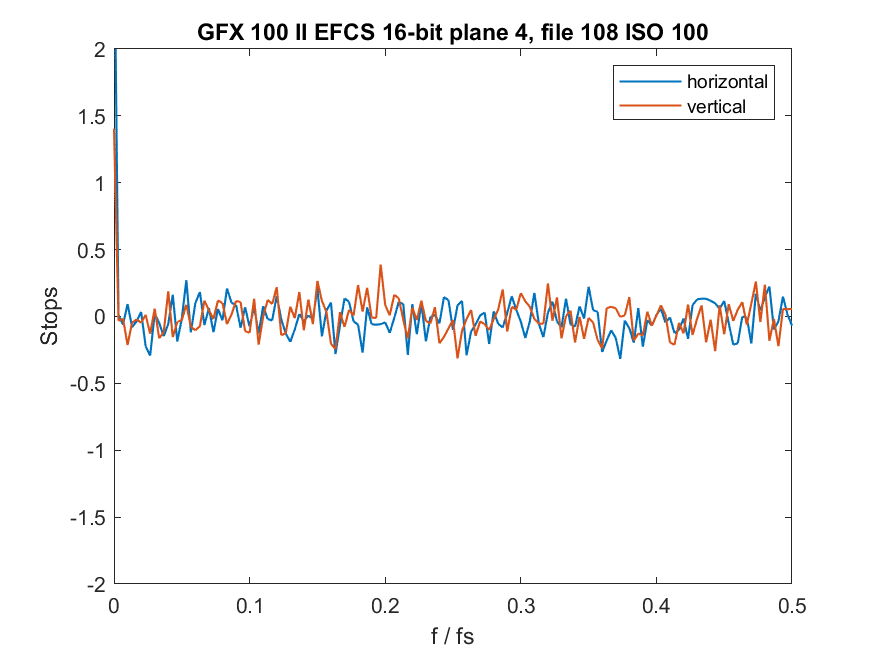
Leave a Reply